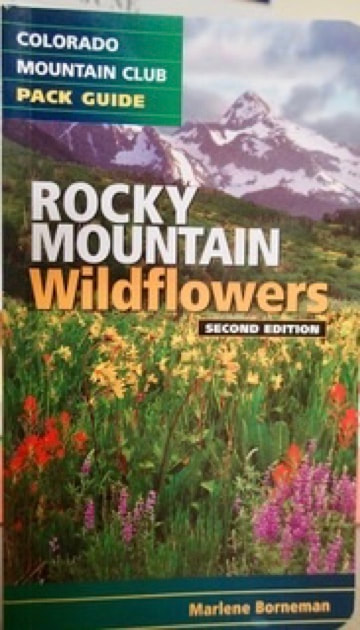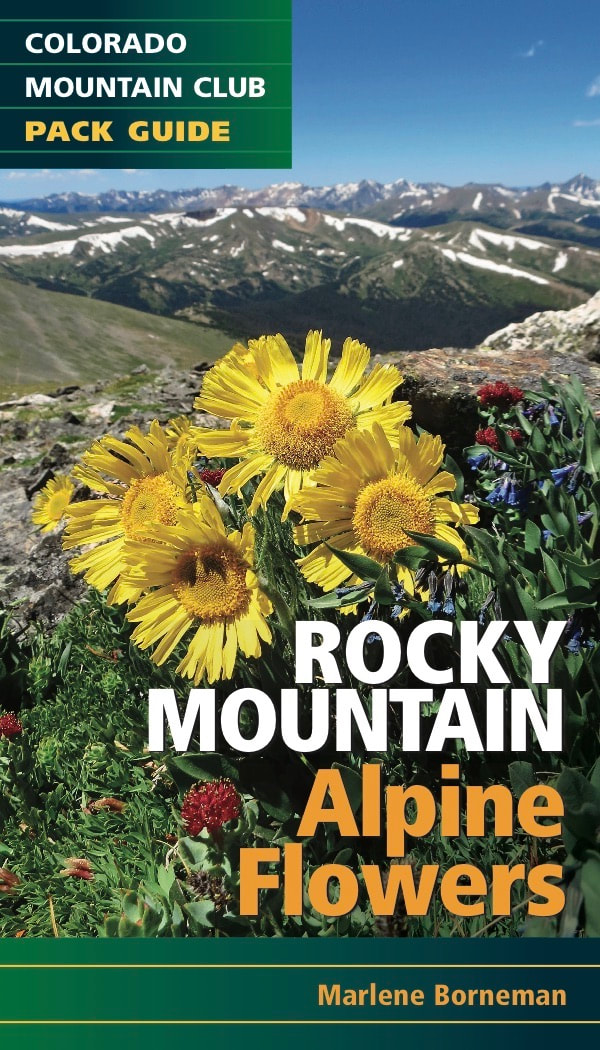Marlene Borneman's Page |
|
“The orchid is Mother Nature’s masterpiece. “ Robyn The fossil record indicates that orchids may have coexisted with dinosaurs! The orchid family is the largest family of flowering plants in the world, approximately 30,000 species. So, it is only fair that approximately 26 species get to call Colorado home. Colorado’s native orchids are terrestrial orchids, referring to growing from the ground in soil. They range from a few inches to over a foot high. Since Rocky Mountain National Park is my backyard, I’m only going to tell the story of orchids that grow in the Park and the Front Range.
I also find how they grow mind-boggling! I will attempt to keep this simple, but remember native orchids are anything but simple! Orchid seeds are extremely minute and can number into the thousands in one single capsule. Because orchid seeds are so minute, they have no food reserves to germinate and are totally dependent on fungus for nutrients during the early stages of growth. Native orchids need a relationship with a variety of fungi to germinate and grow, for some orchids through maturity.
Blunt-leaf Orchid is uncommon in RMNP. It is another orchid I have only seen on the west side. 3”-9” high with one leaf at the base of the plant. The flowers are small and white-greenish in color.
A little trivia …What orchid has the most economic use today? The vanilla orchid. Of course, it does not grow in Colorado! However, some wild orchids found in the Rockies were once used as a food source or for medicinal purposes. For example, the bulbs (corm) of fairy slipper orchids were cooked by Native Americans for their rich buttery taste. The Paiutes made tea from the dried stems of coralroot orchids which was thought to build up the blood.
Yes, believe it or not, there are folks out there who read flower guidebooks/websites and social media to locate native wild orchids to dig up in an attempt to transplant. For this reason, the location of orchids should never be made public. It is a rite of passage for anyone truly dedicated to observing and preserving native orchids to search habitats on their own and earn finding orchids. Only nature knows where to “plant” these orchids for success, so don’t even think of transplanting. Appreciate the orchids when you find them and let others enjoy their magical beauty, too. I just take a bazillion photos. My intention is not only to amplify your curiosity but also your respect for these vulnerable plants. Protect them. Suggested reading: The Orchid Thief by Susan Orlean Those Elusive Native Orchids of Colorado by Scott F. Smith
9 Comments
5/31/2021 04:59:46 pm
Thank you for this informative blog, Marlene!
Reply
1/7/2022 02:56:58 pm
Dear Marlene,
Reply
Derek Diestler
6/4/2023 10:09:22 am
I found a bunch of yellow lady slippers orchids. In Basalt Colorado.
Reply
Marlene Borneman
6/12/2023 11:32:24 am
Lucky you! They are becoming very rare.
Reply
Bonifacio Cosyleon
7/7/2024 09:04:11 pm
Yellow Lady Slippers found in the San Isabel National Forest. They jumped out from some grassy clumps, smiled/giggled and were giddy.
Naomi Y Feiman
7/6/2023 09:53:02 pm
We saw Brownie Lady Slipper orchids today on our hike in RMNP- thank you for helping me ID them! I showed photos to the ranger but she didn’t know, and they weren’t in any of my books!
Reply
10/3/2024 10:59:22 am
Hallo Marlene, looking how many Species of Orchids grow in the Mountains of USA I stepped over Your wonderful Website ! I lived in GA for several years and found so stunning species like the Yellow Fringed Orchid,- one of many species which we do not have in Europe. It is amazing how different species independent from each other developped in Europe and the USA. I just published a book about the region in Bavaria where I grew up (Chiemgau/Chiemsee) and when You are interested in the Orchids which one can found there, You can go on my Website with the link to Photos, and there to Chapter 4. The Calypso does not grow in Bavaria,- I found my first and only one in Teton NP. If you have the chance to visit Bavaria You are invited to stay with us and I can show You places wit our beautiful orchids. Many regards from Bavaria, Yours Uwe Larsen
Reply
Dave Rusk
10/5/2024 11:53:21 am
Hi Uwe, thank you for your message, I will forward it to Marlene.
Reply
6/4/2025 04:31:20 pm
I would like to find yellow lady slippers in Denver metro. I would be willing to go with a group thats going to doing research or w/Native Plant Soiciety. I used to go to Emerald Valley outside of Colorado Springs-would you know if that area is still acessible to the public? Please reply to my email or best call/text 303-249-0986
Reply
Leave a Reply. |
Marlene M. BornemanMarlene has been photographing Colorado’s wildflowers while on her hiking and climbing adventures since 1974. She soon developed a deep interest to learn more about the botany behind their beautiful faces. She has participated in informal and formal studies and extensive fieldwork to further her knowledge and understanding of Colorado’s rich and diverse flora. She has earned her Native Plant Master Certification. Marlene has climbed Colorado’s 54 14ers, the 126 USGS named peaks in Rocky Mountain National Park and 44 State High Points. She has been a member of the Colorado Mountain Club since 1979 and is a member of the Colorado Native Plant Society. She teaches wildflower classes for the Rocky Mountain Conservancy and provides community programs to educate and promote stewardship for Colorado’s wildflowers. Marlene holds a Masters Degree in Social Work and a Certification in Addiction Counseling. She guides in Rocky Mountain National Park and enjoys sharing the scenery as well as her knowledge of the plant life and habitats the park has to offer. She is the author of Rocky Mountain Wildflowers 2Ed. and The Best Front Range Wildflower Hikes, and Rocky Mountain Alpine Flowers, published by CMC Press. 
Description: Rocky Mountain Wildflowers 2Ed.
This beautiful pack guide features 180 of the most common wildflowers in Colorado, from the Plains to the Alpine life zones. Revised with latest scientific classifications, it includes information on life zones, habitats, characteristics of each flower, and blooming times to help with identification. The 220 photos are arranged by color for quick and easy reference. This is a must-have book on Colorado’s trails and a superb educational tool for all ages. Order Here 
Description: Rocky Mountain Alpine Flowers
In summer Colorado’s alpine tundra becomes a dazzling landscape with stunning alpine wildflowers. These fragile, yet hardy plants grow in the harsh environment above treeline, but these wildflowers make the most of the short growing season. Rocky Mountain Alpine Flowers pack guide covers more than 100 of the most common as well as some rare wildflowers found in the alpine. Detailed photos are arranged by color for quick and easy reference. This compact pack guide is a must for hikers and backpackers in the high country for help in identifying these beautiful alpine plants. Order Here |
© Copyright 2025 Barefoot Publications, All Rights Reserved














